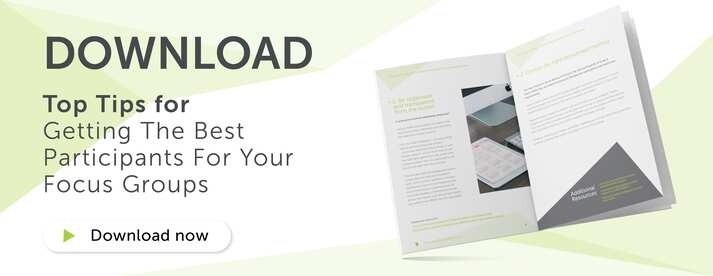
A Beginner's Guide to Conducting Focus Groups Online
Focus groups have always played a key role in market research since they are one of the most effective ways of collating the qualitative market research information required from participants.
What are online focus groups and how do they work?
In-person focus groups have a number of challenges thanks to the sheer logistical effort required to make them happen. Take that same focus group online, however, and the process becomes far simpler – not just for participants, but also for those running the research.
Participants are usually provided with secure login details to access a platform where they can join the session via webcam. These platforms often allow researchers to share anything from adverts to videos or images, while participants can respond using features such as screen annotation, backroom chat functions, live polls, and even video or photo uploads.
Why are they useful?
For participants who are already comfortable sharing their views online – for example, via social media or forums – taking part in an online focus group often feels more natural than in-person or telephone interviews. It’s more convenient and fits better around their schedule.
For researchers, there are several advantages:
-
A larger pool of potential participants, as recruitment isn’t limited by location (provided there’s an internet connection).
-
Faster recruitment timelines.
-
More representative sampling.
-
Reduced costs and time, especially for international projects, as there’s no need to travel.
-
Real-time input from clients, who can chat privately with moderators during the session to help shape the discussion as it happens.
Top tip: A skilled moderator can make or break your online focus group. If you're new to moderating, check out our 10 top tips for successful focus group moderation.

How should you recruit for an online focus group?
As we have already seen, running online focus groups brings many benefits – one of the biggest being that they’re generally easier to recruit for, since travel is no longer a factor. But successful recruitment still depends on using the right method for your audience.
- Social media is a powerful tool for reaching tech-savvy participants. Platforms like Facebook and X (formerly Twitter) can help you recruit a wide range of people.
- Targeted forums, such as Netmums, can help reach specific groups – just make sure you have permission from the forum owner before posting.
- Pre-profiled qualitative panels offer a ready-made audience, although you’ll still need to validate them via telephone.
- Word of mouth is effective both online and offline. A "refer a friend" scheme with incentives can help you build momentum and reach more participants.
- In-person participant recruitment can still be useful. For example, if you're targeting a specific type of shopper, approaching people outside relevant stores can help you identify suitable candidates.
What do you need to consider in terms of software needed?
Choosing the right software is essential for running a smooth online focus group. Ease of use, reliability and visual presentation all play a part.
Consider the following:
- Is the software simple for your participants to use?
- Does it work reliably on different devices and browsers?
- Does it support the tools you need – screen sharing, polls, chat, etc.?
- Have you tested it thoroughly with your intended audience?
- Is tech support available for participants if issues arise?
- If participants encounter technical issues – whether during onboarding or the group itself – it increases the chance they’ll drop out. Having the right support in place helps minimise this risk.
To find out more about how to conduct a successful focus group, download our focus group top tips.
Bonus: Need help keeping your online focus group participants engaged? Take a look at our top task ideas to boost interaction and gather richer insights.









.png?width=110&height=61&name=MRS%20(2).png)


